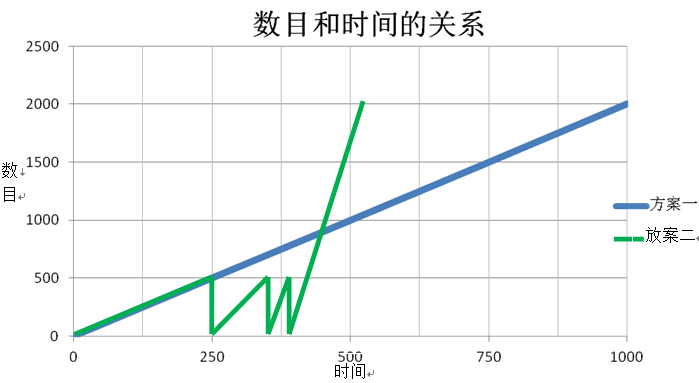给定一个整型数组,请打印出元素和为0的所有子数组。
例如,
输入:
{ 4, 2, -3, -1, 0, 4 }
输出:
Sub-arrays with 0 sum are
{ -3, -1, 0, 4 }
{ 0 }
输入:
{ 3, 4, -7, 3, 1, 3, 1, -4, -2, -2 }
输出:
Sub-arrays with 0 sum are
{ 3, 4, -7 }
{ 4, -7, 3 }
{ -7, 3, 1, 3 }
{ 3, 1, -4 }
{ 3, 1, 3, 1, -4, -2, -2 }
{ 3, 4, -7, 3, 1, 3, 1, -4, -2, -2 }
1. 傻瓜式方法
傻瓜式方法的想法很简单,遍历数组的所有子数组,并计算它们的和。如果子数组的和等于0,那么就打印它。它的时间复杂度是 O(n3),因为一共有 n(n+1)/2(注:原文n2不对)个子数组,花费的时间是O(n2),然后还要花费 O(n)的时间求元素的和。当然,如果在找子数组的同时计算元素的和,那么这种方法可以优化成O(n2)时间。
C++语言实现:
#include <iostream>
#include <unordered_map>
using namespace std;
// Function to print all sub-arrays with 0 sum present
// in the given array
void printallSubarrays(int arr[], int n)
{
// consider all sub-arrays starting from i
for (int i = 0; i < n; i++)
{
int sum = 0;
// consider all sub-arrays ending at j
for (int j = i; j < n; j++)
{
// sum of elements so far
sum += arr[j];
// if sum is seen before, we have found a sub-array
// with 0 sum
if (sum == 0)
cout << "Subarray [" << i << ".." << j << "]\n";
}
}
}
// main function
int main()
{
int arr[] = { 3, 4, -7, 3, 1, 3, 1, -4, -2, -2 };
int n = sizeof(arr)/sizeof(arr[0]);
printallSubarrays(arr, n);
return 0;
}
[/cpp]
Java语言实现:
[java]class PrintallSubarrays
{
// Function to print all sub-arrays with 0 sum present
// in the given array
public static void printallSubarrays(int arr[])
{
// n is length of the array
int n = arr.length;
// consider all sub-arrays starting from i
for (int i = 0; i < n; i++)
{
int sum = 0;
// consider all sub-arrays ending at j
for (int j = i; j < n; j++)
{
// sum of elements so far
sum += arr[j];
// if sum is seen before, we have found a sub-array with 0 sum
if (sum == 0)
System.out.println("Subarray [" + i + ".." + j + "]");
}
}
}
// main function
public static void main (String[] args)
{
int arr[] = { 3, 4, -7, 3, 1, 3, 1, -4, -2, -2 };
printallSubarrays(arr);
}
}[/java]
<strong>输出:</strong><span style="font-family: consolas; font-size: small;">
Subarray [0..2]
Subarray [0..9]
Subarray [1..3]
Subarray [2..5]
Subarray [3..9]
Subarray [5..7]</span>
<br>
<div style="background-color: #99CCFF; height: 1px;"></div>
<h3>2. 使用map打印子数组</h3>
我们可以使用map打印所有和为0的子数组,子数组信息存放在另外的数组中并作为map的value。开始,我们创建一个空map存放所有和等于给定值的子数组的的结束下标。其中,key是和,value就是之前提到的另外一个数组,此数组中存放的就是和等于key的所有子数组的结束下标。我们遍历给定数组,在遍历程中维护目前所遍历过的元素的和。如果元素的和在之前见过,那就意味着至少存在一个子数组和为0,子数组的结束下标就是当前遍历的下标,这样我们就能打印出所有的子数组。
C++语言实现:
[cpp]
#include <iostream>
#include <unordered_map>
using namespace std;
// Function to print all sub-arrays with 0 sum present
// in the given array
void printallSubarrays(int arr[], int n)
{
// create an empty multi-map to store ending index of all
// sub-arrays having same sum
unordered_multimap<int, int> map;
// insert (0, -1) pair into the map to handle the case when
// sub-array with 0 sum starts from index 0
map.insert(pair<int, int>(0, -1));
int sum = 0;
// traverse the given array
for (int i = 0; i < n; i++)
{
// sum of elements so far
sum += arr[i];
// if sum is seen before, there exists at-least one
// sub-array with 0 sum
if (map.find(sum) != map.end())
{
auto it = map.find(sum);
// find all sub-arrays with same sum
while (it != map.end() && it->first == sum)
{
cout << "Subarray [" << (it->second + 1) << ".." << i << "]\n";
it++;
}
}
// insert (sum so far, current index) pair into multi-map
map.insert(pair<int, int>(sum, i));
}
}
// main function
int main()
{
int arr[] = { 3, 4, -7, 3, 1, 3, 1, -4, -2, -2 };
int n = sizeof(arr)/sizeof(arr[0]);
printallSubarrays(arr, n);
return 0;
}
java语言实现:
import java.util.HashMap;
import java.util.Map;
import java.util.ArrayList;
class PrintallSubarrays
{
// Utility function to insert <key, value> into the Multimap
private static void insert(Map<Integer, ArrayList> hashMap,
Integer key, Integer value)
{
// if key is already present
if (hashMap.containsKey(key))
{
hashMap.get(key).add(value);
}else
// key is seen for the first time
{
ArrayList<Integer> list = new ArrayList<Integer>();
list.add(value);
hashMap.put(key, list);
}
}
// Function to print all sub-arrays with 0 sum present
// in the given array
public static void printallSubarrays(int arr[])
{
// n is length of the array
int n = arr.length;
// create an empty Multi-map to store ending index of all
// sub-arrays having same sum
Map<Integer, ArrayList> hashMap = new
HashMap<Integer, ArrayList>();
// insert (0, -1) pair into the map to handle the case when
// sub-array with 0 sum starts from index 0
insert(hashMap, 0, -1);
int sum = 0;
// traverse the given array
for (int i = 0; i < n; i++)
{
// sum of elements so far
sum += arr[i];
// if sum is seen before, there exists at-least one
// sub-array with 0 sum
if (hashMap.containsKey(sum))
{
ArrayList<Integer> list = hashMap.get(sum);
// find all sub-arrays with same sum
for (Integer value: list) {
System.out.println("Subarray [" + (value + 1) + ".." + i + "]");
}
}
// insert (sum so far, current index) pair into the Multi-map
insert(hashMap, sum, i);
}
}
// main function
public static void main (String[] args)
{
int A[] = { 3, 4, -7, 3, 1, 3, 1, -4, -2, -2 };
printallSubarrays(A);
}
}
输出:
Subarray [0..2]
Subarray [1..3]
Subarray [2..5]
Subarray [5..7]
Subarray [3..9]
Subarray [0..9]
这样,只需遍历一次数组就能求出所有的子数组。
练习: 打印出和为非0的所有子数组。


